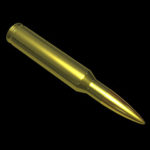The tutorial we will see is based on a study of some simple ways of using Adobe Photoshop layer styles to create some great shadows and a realistic sense of the 3 dimensions. This exercise also shows you some interesting ways to use the Gradient Overlay option to create a metallic effect. A very well illustrated and easy to follow lesson for users who have a good knowledge of the program.
Related Posts
Create a Coffee Mug Design in Illustrator
Le tazze sono parte della nostra vita quotidiana. Ci aiutano a godere maggior parte delle nostre bevande preferite quotidiane – dal caffè e tè caldo al latte freddo e tè…
9 Ways to Destroy Things in Blender – Tutorial
This short video tutorial will guide you through nine different ways of destroying your 3D models in Blender. A nice roundup of ‘explosions’ for lovers of disruptive effects.
Paint Water Waves and Ocean in Photoshop
In the tutorial we will visit, we show you how to paint beautiful ocean waves with a couple of reference images using the Adobe Photoshop graphics and photo editing program.…
Change Eye Color in Photoshop tutorial
Ever wanted to change the color of the eyes in the photos? Some information on how to change eye color with this video tutorial in Adobe Photoshop using some simple…
Create a Minecraft Text Effect in Adobe Illustrator
Nei passi del tutorial che andremo a seguire imparerete come creare un effetto di testo ‘Minecraft’ in Adobe Illustrator. Dopo aver impostato una semplice griglia, creeremo le principali forme che…
Create iPod Shuffle in Photoshop Tutorial
In the tutorial we’re going to explain how to draw an Apple iPod Shuffle with Adobe Photoshop using the original image from the Apple website as a reference point, and…














